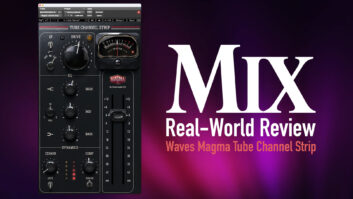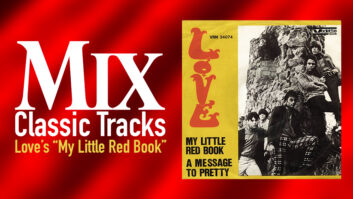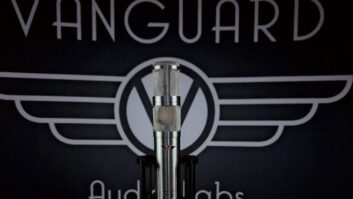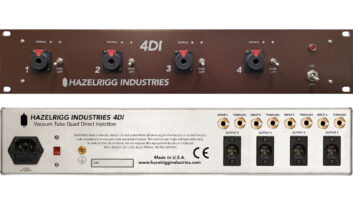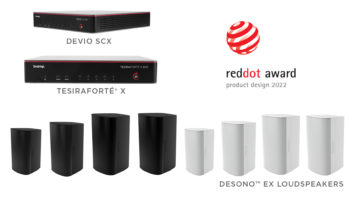
Korby Audio Technologies is a Nahville-based boutique mic shop whose practice of doing all the work in-house and by hand sets the company above the crowd. Part of that procedure is a painstaking process of listening to each product exhaustively after burn-in and tuning each capsule with the intention of getting it just right.
Korby also offers a unique custom-tuning service that lets customers return the purchased mic for another round of tweaking if the product does not live up to their expectations. Korby makes a number of FET and tube mics, including the KAT System convertible mic with interchangeable capsules (reviewed in October 2006 issue). For this test, I had one of each of the new KAT RED and KAT BLUE mics, both having an under-grille LED that speaks its name in color when the mic is powered up.
NEW KATS ON THE BLOCK

The KAT RED and KAT BLUE are both fixed-pattern, cardioid tube condensers, each using an NOS Philips 6111 dual triode. The bodies and long swing arms that hold the mics are brass, and the entire rig is covered in a brushed-nickel finish. The feel is solid, and the bodies are considerably smaller than you’d expect from a 1-inch diaphragm, making it easy to swing and place the mic in tight spots. The difference between the two arises in the capsules. The RED is a free-floating, side-terminated, custom-tuned capsule tuned with an AKG C 12 backplate, while the BLUE is a center-terminated, custom-tuned capsule with a Neumann U67 backplate.
IT’S STUDIO TIME
I first heard the KAT RED placed seven inches back from an acoustic guitar, just above the sound hole. This mic is more dependent on placement than any other mic I’ve reviewed. It would be easy to give up at first listen and move on, but it’s worth the extra effort to place it properly. At first, it was not flattering, but then I pulled it back another two to three inches and it sounded bright — but not overly so — and true to the guitar’s tone. It was not boomy in the least, but this particular guitar tends to be hot in the upper-mids. The true test was in the track: It sounded great with no need for EQ to make it cut through. The attack of the pick against the strings was clearly defined and the overall tone was round with plenty of top but without being harsh.
The KAT BLUE was next up as a center overhead on a drum kit, positioned about two feet above the tops of the cymbals. The top end was clean and the bottom was full, with no hint of harshness in the cymbals. When the snare was hit, the mic produced a slightly compressed sound that gave the snare a nice, natural roundness. I next heard the mic on the outside of a kick drum, pulled back about eight inches. At first, the kick sounded slightly overdriven, but moving the mic back another foot was just the ticket, providing plenty of great low-end thump.
When capturing a Leslie cabinet, the KAT BLUE exhibited a nice warmth and fullness, even though it was used at the top of the cabinet on the rotating horn. As a secondary option, a Royer SF-24 stereo ribbon mic filled out the middle nicely; both mics worked well in tandem in this application. The RED sounded fantastic on a guitar cabinet. The player switched between clean and distorted sounds, and the mic provided great pick detail and ample top for the clean sound, and covered the top end of the distorted sound, as well. As another option, a Shure SM57 nicely filled in the midrange, making this combination a winner.
I next heard the BLUE on a male lead vocal. This particular vocalist makes for a tough session, as he has a strident edge to his voice. I often use him as a bellwether on how a mic tames transients and handles harsh vocals. I often use an SM7 on him because it does a good job at rounding out his dynamics and frequency peaks. The BLUE did a great job, offering top end with great detail while providing warmth and a nice roundness to the transient peaks. It was a clear winner over the SM7, which sounded tubby by comparison.
I SEE THE LIGHT
These mics are special. Although tailored after vintage Euro stock, putting the RED and BLUE in that box would be a disservice. Each has its own personality and is eminently usable in nearly every situation. The mics’ small size is a plus, making them easy to place accurately and position in tight spots.
If I had one complaint it would be that there’s a lack of identity when the mics aren’t plugged in. It’s easy to tell them apart when the LED is on, but when they’re in the dark, so am I. I found myself having to look at the capsule to see if it was terminated in the center to identify the mic as RED or BLUE.
That aside, the performance of both was stellar. The RED had a nice silky top end that wasn’t overblown, and the BLUE exhibited a warmth that worked great on male lead vocals and outside a kick drum. Korby has released more mics that are a dream to use and listen to. Price: $3,495 each, including power supply, cable, yoke mount and case.
Korby Audio, dist. by Vintage King, 248/591-9276, www.vintageking.com, www.korbyaudio.com.
